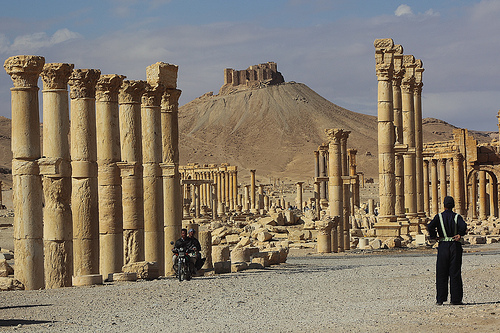The last great event that occurred during the terrible civil war in Syria was the conquest by the Isis militants of Palmyra, one of the most important Syrian cities with a huge historical value and a considerable archeological heritage.
The conquest of the city arouses great worries in the international environment because of the precious historical monuments and sites located in Palmyra could be damaged or, in the worst case, destroyed.
The UNESCO, particularly, has been trying for several weeks to bring the issue of Palmyra to international attention: in mid-May, before the city was abandoned by the regular Syrian soldiers and conquered by rebels, UNESCO had already raised alarm though Twitter: “We must save Palmyra & prevent its destruction”.
Specifically, it is feared that the archeological site could be damaged as it is impossible to physically carry out the oversize ancient monuments located in it, on the contrary to some artifacts of the museums, which can be more easily transported.
The alarm is not unfounded: Palmyra has an immense value and is a wonderful testimony of the ancient world: it is an incredible open-air museum like Pompeii in Italy and Stonehenge in Great Britain. The Syrian city is located in a natural oasis 240 km from the capital, Damasco, and it actually has a history of three thousands years.
During the Hellenistic kingdom of Seleucids, the city of Palmyra gained its independence and quickly became an important place for commerce and travel. In the first century after Christ, the city was totally integrated into the Roman province of Syria and had a huge strategic role in the Empire because it became a connection between the West – above all, Rome and the other important cities of the Mediterranean – and the East – the region of Mesopotamia and the kingdom of Persia-.
The nickname “the bride of the Desert” was born at that time: ancient travelers and traders who had to cross the desert, had the chance to stop and rest in this magnificent natural oasis which stood in the middle of the desert itself.
Palmyra, however, could not be considered only a rich and prosperous Roman province: in the III century A.C. it was the capital of the independent kingdom of Palmyra. At the end of the previous century, the city was declared an independent place from the Roman Empire. In 267 A.C., the Queen Zenobia ascended to the throne of Palmyra (after the death of her husband Odenato); she had a great dream of creating a strong kingdom in the east of Roman Empire. Zenobia led a military campaign and she briefly reached to conquer very important regions of the Roman Empire as Egypt and the ancient Bitinia. The independent kingdom of Palmyra stopped to exist when the Roman Emperor Aureliano managed to reconquer the lost regions and to besiege the Syrian city.
The glorious history of the city is testified by the huge archeological site, which is considered one of the most important in Middle East; in that site there are monuments such as the Field of Diocletian, the sanctuary of Baal (built under the Emperor Tiberius), the Allat Temple, the Temple of Nabu, a Roman theater, a necropolis and the wall around the city.
All these works have endured for centuries: they have overcome wars and sieges, and after two thousand years they are still there to remember us the beauty of the ancient world. Today this wonderful place is in critical condition and unfortunately it seems that some monuments are already damaged. We really must hope that “the bride of Desert” will be able to survive the terrible and long civil war which is affecting Syria.

